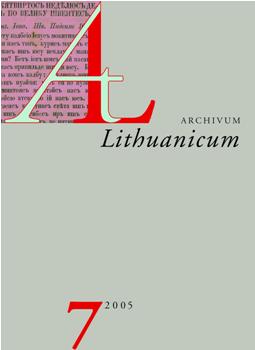Priesaginiai žiedinių augalų pavadinimai Jurgio Ambraziejaus Pabrėžos veikale Tayslos augumyynis (1843)
Suffixal names of phanerogams in the botanical work of Tayslós Augumyynis (1843) by Jurgis Ambraziejus Pabreža
Author(s): Robertas GedrimasSubject(s): Theoretical Linguistics, Lexis, Baltic Languages
Published by: Lietuvių Kalbos Institutas
Keywords: Suffixal names; Botanical work; Jurgis Ambraziejus Pabreža; Lowland Lithuania; Dialect; Subdialect; Lithuanian language;
Summary/Abstract: Jurgis Ambraziejus Pabrëþa (1771-1849), a famous Samogitian (Lowland Lithuanian) naturalist and Franciscan Father, wrote the fundamental botanical work Tayslós Augumyynis (The System of Plants) in his native Northern Lowland subdialect of Kretinga in 1843 (the manuscript is kept in the Lithuanian National Library: f. 124 - 1). In this book he described 643 phanerogams and over 150 cryptogams and funguses. Tayslós Augumyynis was not entirely published, but later it became the basic work for modern Lithuanian botanical terminology. Pabrëþa created terms by three means: 1) making terms out of folk lexis, 2) producing neologisms, 3) borrowing terms (from other languages). This article deals with suffixal names (neologisms) of phanerogams in Tayslós Augumyynis. The suffixal names make up 27% of all the derivatives in his work. Pabrëþa creates suffixal names of phanerogams with 25 suffixes and their variants. Four suffixes are the most productive: -ûnas (-ë); -utis (-ë); -ytë; -elis (-ë); with each of these suffixes Pabrëþa created at least five names. Over 20 of Pabrëža's suffixal names of phanerogams made their way into modern Lithuanian botanical terminology.
Journal: Archivum Lithuanicum
- Issue Year: 2005
- Issue No: 07
- Page Range: 81-92
- Page Count: 12
- Language: Lithuanian

